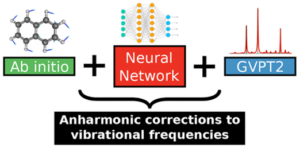Active matter
Structural architectures in living cells, such as the cytoskeleton in muscle or plant tissue, are both viscoelastic and active, i.e. undergo continuous injection of energy, leading to remarkable collective, non-equilibrium properties. The simulation of active systems is relatively straight forward, but the thermodynamics, kinetics and statistical mechanics of such systems are far from understood. While active fluids (swarms, swimmers) have seen an explosion of interest recently, their solid (elastic) counterparts remain completely unexplored and understanding such phenomena remains one of the grand challenges of modern statistical physics.
Patchy Particles
We use patchy particles as a model system for exploring complex molecular structures with high controllability. Patchy particles are micron-sized colloidal particles dressed with patches that are able to form bonds under specific solvent compositions and temperatures. While patchy particles are big enough to be observed in experiment under e.g. a confocal microscope, they are small enough to exhibit similar statistical behavior as atoms and molecules. In addition, patchy particles are a mesoscopic structural analogue of carbon atoms. Divalent patchy particles make linear bonds like sp hybridized carbon atoms and act as monomers forming chains as shown in the background. Tetravalent patchy particles make tetrahedral bonds and may form rings with a half-chair or envelope conformation like cyclopentane.
TPS on active systems
In collaboration with the experimental Soft Matter group we explore active patchy particle architectures. We simulate these systems with our computational model that mimics the structural and dynamical properties of patchy particles chains measured in experiment. Just like chemical reactions in molecular systems, structural deformations in colloidal architectures are rare transitions that we are interested in.
Computationally we use enhanced sampling methods such as transition path sampling (TPS) to overcome large barriers in the potential energy landscape. Recently, a new TPS approach has been developed that a allows us to explore rare transition in active systems and unravel complex out-of-equilibrium behavior of viscoelastic materials.







